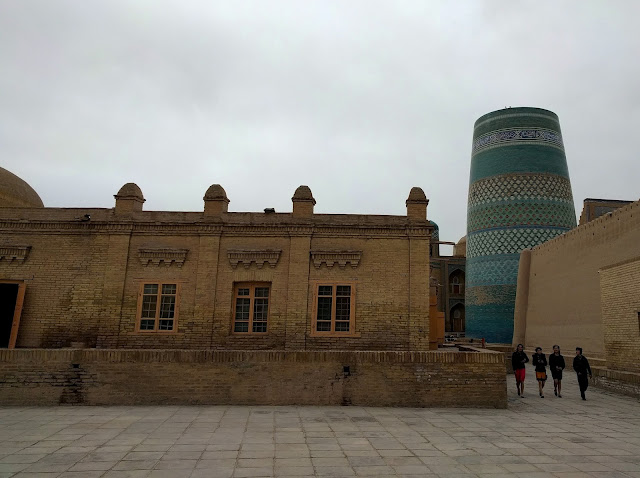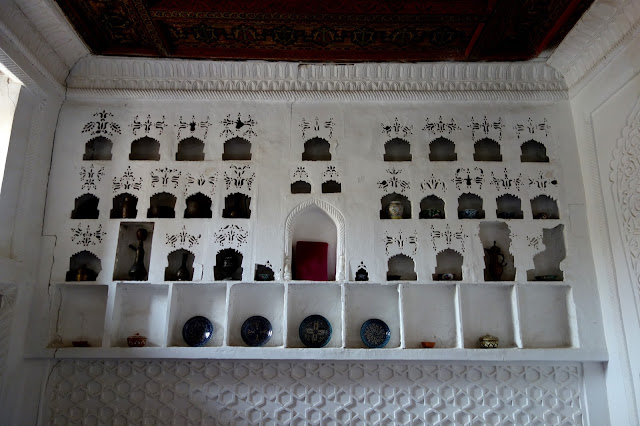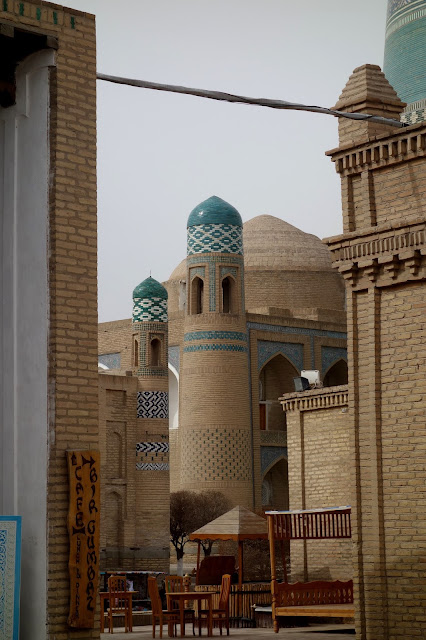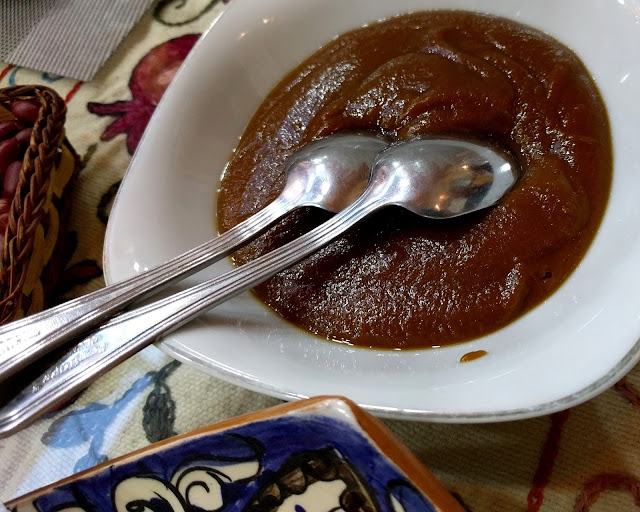So immediately upon returning from Uzbekistan (and I will continue the posts - post haste) we had/have a number of events to attend- starting today we begin the Sarasota Film Festival with three films and then today I have four more and by the end of the week long festival I will have seen more than two dozen films of various lengths - from ten minutes to two hours... but even before we get there we had other engagements -
A wine dinner at Michael's Wine Cellar - always an excellent meal and good company---
Then two nights later - the Wine Walk to Ca d'Zan at the Ringling Museum a fund raiser for the upkeep of the house and grounds... glorious evening for the walk around dining and tasting on the museum grounds!
We started the week back with sushi at our favorite Kasa Sushi- and had a couple of new things as well as old favorites-
so we are off in 20 minutes to the SFF (Film Festival) to see two films and a group of shorts- will report back on those later as well as getting back to the Uzbekistan blog posts ASAP! Stay tuned!
a blog about my new semi-free-life after 30+ years of law (travel, food, theater, and an occasional rant)
Saturday, April 1, 2017
Friday, March 31, 2017
Kool Khiva!
Khiva, a city of blue and turquoise and sand colored bricks was our next adventure. We will spend our day inside the inner city known as the Ichan Kala... a UNESCO World Heritage site (the first in Uzbekistan) that is evocative of the silk route's heyday... so off we go...
The info from wikipedia- Khiva is a city of approximately 50,000 people located in Xorazm Region, Uzbekistan. According to archaeological data, the city was established in the beginning of the Christian era. It is the former capital of Khwarezmia and the Khanate of Khiva. Itchan Kala in Khiva was the first site in Uzbekistan to be inscribed in the World Heritage List (1991).
The origin of the name Khiva is unknown, but many contradictory stories have been told to explain it.
A traditional story attributes the name to one of the sons of Noah: "It is said that Shem [from whence the word Semitic is derived], after the flood, he found himself wandering in the desert alone. Having fallen asleep, he dreamt of 300 burning torches. On waking up, he was pleased with this omen, he founded the city with outlines in the form of a ship mapped out according to the placement of the torches, about which he had dreamt. Then Sim dug the 'Kheyvak' well, the water from which had a surprising taste. It is possible to see this well in Ichan-Kala (an internal town of Khiva City) even today." Another story relates that travellers passing through the city, upon drinking the excellent water, would exclaim "Khey vakh!" ("What a pleasure!") and hence the city became known as Kheyvakh, whence Khiva.
The city of Khiva was first recorded by Muslim travellers in the 10th century, although archaeologists assert that the city has existed since the 6th century. By the early 17th century, Khiva had become the capital of the Khanate of Khiva, ruled by a branch of the Astrakhans, a Genghisid dynasty. In 1873, Russian General Konstantin von Kaufman launched an attack on the city. Although the Russian Empire now controlled the Khanate, it nominally allowed Khiva to remain as a quasi-independent protectorate. Following the Bolshevik seizure of power after the October Revolution, a short lived Khorezm People's Soviet Republic was created out of the territory of the old Khanate of Khiva, before its incorporation into the USSR in 1924, with the city of Khiva becoming part of the Uzbek Soviet Socialist Republic.
Khiva is split into two parts. The outer town, called Dichan Kala, was formerly protected by a wall with 11 gates. The inner town, or Itchan Kala, is encircled by brick walls, whose foundations are believed to have been laid in the 10th century. Present-day crenellated walls date back to the late 17th century and attain the height of 10 meters. The large blue tower in the central city square was supposed to be a minaret, but the Khan died and the succeeding Khan did not complete it. The old town retains more than 50 historic monuments and 250 old houses, mostly dating from the 18th or the 19th centuries. Djuma Mosque, for instance, was established in the 10th century and rebuilt in 1788-89, although its celebrated hypostyle hall still retains 112 columns taken from ancient structures.
the photos only scratch the surface of its mysterious and exotic allure- and I will start with a stop just inside the city gates - where we found lots of incredible hats and have several modeled for us by group members- LOL
we walked from our hotel around the wall of the city to the main gate of the old inner city-
the brick dome structures are graves outside the walls that are there to discourage invaders who wouldn't step on the graves to attack the wall...
we bought the ticket for photography -
Then we started exploring the city in earnest-
just a few more photos of the fabulous sites and then some food and fun pictures- I am sparing you massive numbers of excellent photos because I have culled from over 550 photos to these select "few" LOL
making sumalac for Navruz (wheat grass fermented and cooked down into a jammy like substance that is an accquired taste LOL)
Jane tried her hand at stirring the pot which must be done constantly until the sumalak is the right consistency-
our lunch- salads- soup- bread- fruit and a main of pumpkin and cabbage and mystery meat-
this is the place we had dinner- and learned to make these terrific green noodles made of dill -
the below eggplant and tomato salad is one I might try at home it was so terrific!
sumalak in its completed form-
pumpkin soup-
the dill noodles and a meat and carrot dish-
so we all loved Khiva- but stay tuned for more fun and fabulous sights along the way...
The info from wikipedia- Khiva is a city of approximately 50,000 people located in Xorazm Region, Uzbekistan. According to archaeological data, the city was established in the beginning of the Christian era. It is the former capital of Khwarezmia and the Khanate of Khiva. Itchan Kala in Khiva was the first site in Uzbekistan to be inscribed in the World Heritage List (1991).
The origin of the name Khiva is unknown, but many contradictory stories have been told to explain it.
A traditional story attributes the name to one of the sons of Noah: "It is said that Shem [from whence the word Semitic is derived], after the flood, he found himself wandering in the desert alone. Having fallen asleep, he dreamt of 300 burning torches. On waking up, he was pleased with this omen, he founded the city with outlines in the form of a ship mapped out according to the placement of the torches, about which he had dreamt. Then Sim dug the 'Kheyvak' well, the water from which had a surprising taste. It is possible to see this well in Ichan-Kala (an internal town of Khiva City) even today." Another story relates that travellers passing through the city, upon drinking the excellent water, would exclaim "Khey vakh!" ("What a pleasure!") and hence the city became known as Kheyvakh, whence Khiva.
The city of Khiva was first recorded by Muslim travellers in the 10th century, although archaeologists assert that the city has existed since the 6th century. By the early 17th century, Khiva had become the capital of the Khanate of Khiva, ruled by a branch of the Astrakhans, a Genghisid dynasty. In 1873, Russian General Konstantin von Kaufman launched an attack on the city. Although the Russian Empire now controlled the Khanate, it nominally allowed Khiva to remain as a quasi-independent protectorate. Following the Bolshevik seizure of power after the October Revolution, a short lived Khorezm People's Soviet Republic was created out of the territory of the old Khanate of Khiva, before its incorporation into the USSR in 1924, with the city of Khiva becoming part of the Uzbek Soviet Socialist Republic.
Khiva is split into two parts. The outer town, called Dichan Kala, was formerly protected by a wall with 11 gates. The inner town, or Itchan Kala, is encircled by brick walls, whose foundations are believed to have been laid in the 10th century. Present-day crenellated walls date back to the late 17th century and attain the height of 10 meters. The large blue tower in the central city square was supposed to be a minaret, but the Khan died and the succeeding Khan did not complete it. The old town retains more than 50 historic monuments and 250 old houses, mostly dating from the 18th or the 19th centuries. Djuma Mosque, for instance, was established in the 10th century and rebuilt in 1788-89, although its celebrated hypostyle hall still retains 112 columns taken from ancient structures.
the photos only scratch the surface of its mysterious and exotic allure- and I will start with a stop just inside the city gates - where we found lots of incredible hats and have several modeled for us by group members- LOL
we walked from our hotel around the wall of the city to the main gate of the old inner city-
the brick dome structures are graves outside the walls that are there to discourage invaders who wouldn't step on the graves to attack the wall...
we bought the ticket for photography -
Then we started exploring the city in earnest-
just a few more photos of the fabulous sites and then some food and fun pictures- I am sparing you massive numbers of excellent photos because I have culled from over 550 photos to these select "few" LOL
making sumalac for Navruz (wheat grass fermented and cooked down into a jammy like substance that is an accquired taste LOL)
Jane tried her hand at stirring the pot which must be done constantly until the sumalak is the right consistency-
our lunch- salads- soup- bread- fruit and a main of pumpkin and cabbage and mystery meat-
this is the place we had dinner- and learned to make these terrific green noodles made of dill -
the below eggplant and tomato salad is one I might try at home it was so terrific!
sumalak in its completed form-
pumpkin soup-
the dill noodles and a meat and carrot dish-
so we all loved Khiva- but stay tuned for more fun and fabulous sights along the way...
Labels:
#harem,
#khiva,
#uzbekistan,
harem,
khiva,
minarets,
mosques,
Uzbekistan
Subscribe to:
Comments (Atom)




























































































